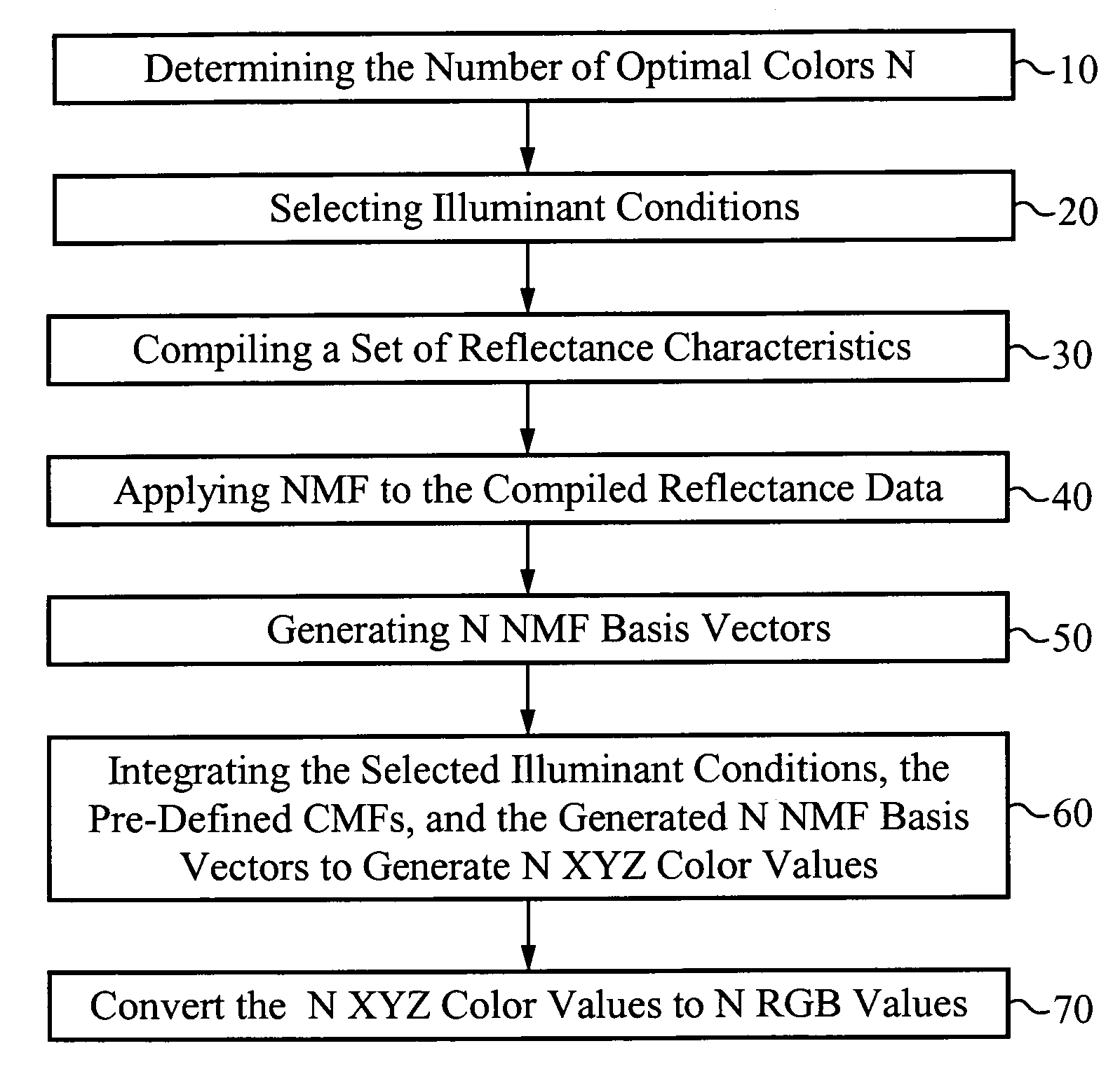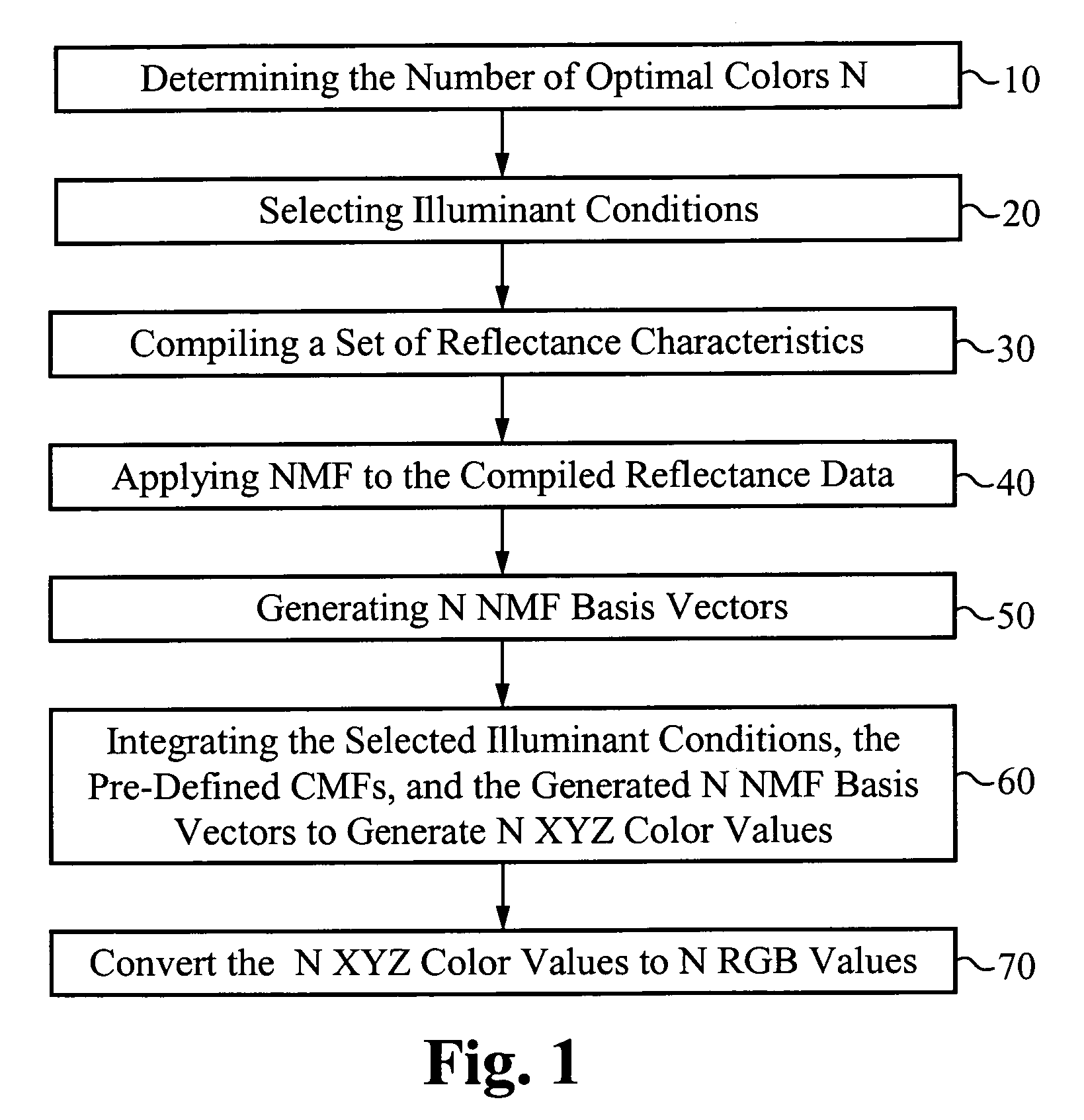Identifying optimal colors for calibration and color filter array design
- Summary
- Abstract
- Description
- Claims
- Application Information
AI Technical Summary
Benefits of technology
Problems solved by technology
Method used
Image
Examples
Embodiment Construction
[0023] Non-negative matrix factorization (NMF) is a method that provides basis functions and coefficients that are always non-negative. NMF can be applied to the computation of reflectance basis vectors in the following manner. The m, n-dimensional reflectance measurements, for example from a Macbeth color chart, are combined into a n×m matrix V. This matrix is approximately factored into a n×r matrix W and an r×m matrix H, where r<m, n. In this manner, a non-negative matrix V is approximated by the expression V≈WH. The approximation for matrix V can be rewritten column by column as v≈Wh, where v and h are the corresponding columns of V and H. In other words, each data vector v is approximated by a linear combination of columns of W, weighted by the components of h. Therefore, the matrix W can be regarded as containing a basis that is optimized for the linear approximation for the data in the matrix V. Since relatively few basis vectors are used to represent many data vectors, good ...
PUM
 Login to View More
Login to View More Abstract
Description
Claims
Application Information
 Login to View More
Login to View More - R&D
- Intellectual Property
- Life Sciences
- Materials
- Tech Scout
- Unparalleled Data Quality
- Higher Quality Content
- 60% Fewer Hallucinations
Browse by: Latest US Patents, China's latest patents, Technical Efficacy Thesaurus, Application Domain, Technology Topic, Popular Technical Reports.
© 2025 PatSnap. All rights reserved.Legal|Privacy policy|Modern Slavery Act Transparency Statement|Sitemap|About US| Contact US: help@patsnap.com



